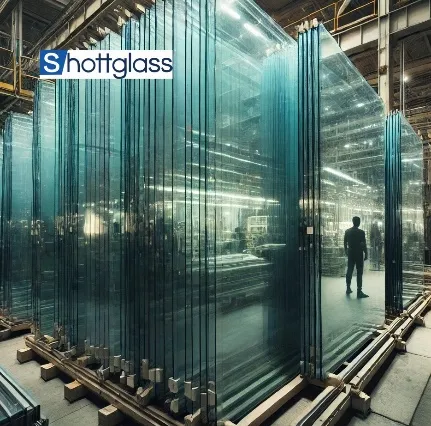Dec . 04, 2024 09:49 Back to list
toughened glass
The Versatility and Strength of Toughened Glass
Toughened glass, also known as tempered glass, has become an essential material in various industries due to its impressive strength and safety features. It is manufactured through a process of extreme heating and rapid cooling, which alters its internal structure, making it significantly tougher than ordinary glass. This unique property allows toughened glass to withstand greater levels of stress and impact, making it an ideal choice for a wide range of applications.
One of the most compelling characteristics of toughened glass is its remarkable strength. It is approximately five to six times stronger than standard glass of the same thickness. This enhanced strength is particularly beneficial in environments that require safety and durability. For instance, toughened glass is commonly used in car windows, shower doors, glass doors, and facades of buildings. The automotive industry relies heavily on toughened glass to ensure passenger safety. In the event of an accident, it breaks into small, blunt pieces rather than shattering into sharp shards, reducing the risk of injury.
In architectural applications, toughened glass is favored for its ability to support large expanses of glass without the need for bulky framing. This creates sleek, modern designs that enhance the aesthetic appeal of buildings. Additionally, it can withstand extreme temperature changes, making it suitable for use in climate-controlled environments. For example, in restaurants with large glass walls, toughened glass helps maintain a comfortable atmosphere while allowing an unobstructed view of the surroundings.
Another significant advantage of toughened glass is its resistance to thermal stress. Under regular conditions, glass can easily crack or shatter due to temperature fluctuations. However, the tempering process allows toughened glass to handle these changes without compromising its integrity. This feature is particularly beneficial in regions with extreme weather variations, where traditional glass might fail under pressure.
toughened glass

Furthermore, toughened glass is utilized in safety applications, such as glass railings and balustrades. In these scenarios, the glass not only provides a barrier but also enhances the visual impact of the space. The transparency of toughened glass allows for unobstructed views while ensuring safety, making it an ideal choice for both residential and commercial properties.
The versatility of toughened glass extends beyond safety and strength; it can also be customized to meet specific design preferences. Toughened glass can be produced in various colors, tints, and patterns, enabling architects and designers to achieve desired aesthetics. It can also be treated with coatings to improve energy efficiency, UV resistance, and glare reduction. This adaptability makes toughened glass a popular choice in contemporary architecture, where both functionality and style are essential.
In addition to its physical properties, toughened glass is environmentally friendly. It is fully recyclable, and the production process generates less waste compared to other materials. As sustainability becomes increasingly important across industries, the use of toughened glass aligns with eco-friendly practices.
Despite its many advantages, it is essential to note that toughened glass is not invincible. While it is highly durable, it can break under extreme circumstances, such as heavy impacts or significant thermal stress. Therefore, proper installation and maintenance are crucial to ensure its longevity and performance. Regular inspections can help identify any potential issues before they escalate, allowing for proactive measures to be taken.
In conclusion, toughened glass stands out as a superior material in the construction, automotive, and design industries. Its unmatched strength, safety features, and versatility make it a preferred choice for various applications. As technology advances and aesthetic demands evolve, the role of toughened glass is likely to expand further, cementing its place as a fundamental material in modern architecture and design. Embracing toughened glass not only enhances structural integrity but also contributes to the beauty and safety of our built environment.
-
Safety and Style with Premium Laminated Glass Solutions
NewsJun.24,2025
-
Reinvents Security with Premium Wired Glass
NewsJun.24,2025
-
Premium Float Glass Line for Modern Architecture
NewsJun.24,2025
-
Low Emissivity Glass for Energy-Efficient Architecture
NewsJun.24,2025
-
High-Performance Insulated Glass Solutions for Modern Architecture
NewsJun.24,2025
-
Elevates Interior Style with Premium Silver Mirror
NewsJun.24,2025
Related PRODUCTS














